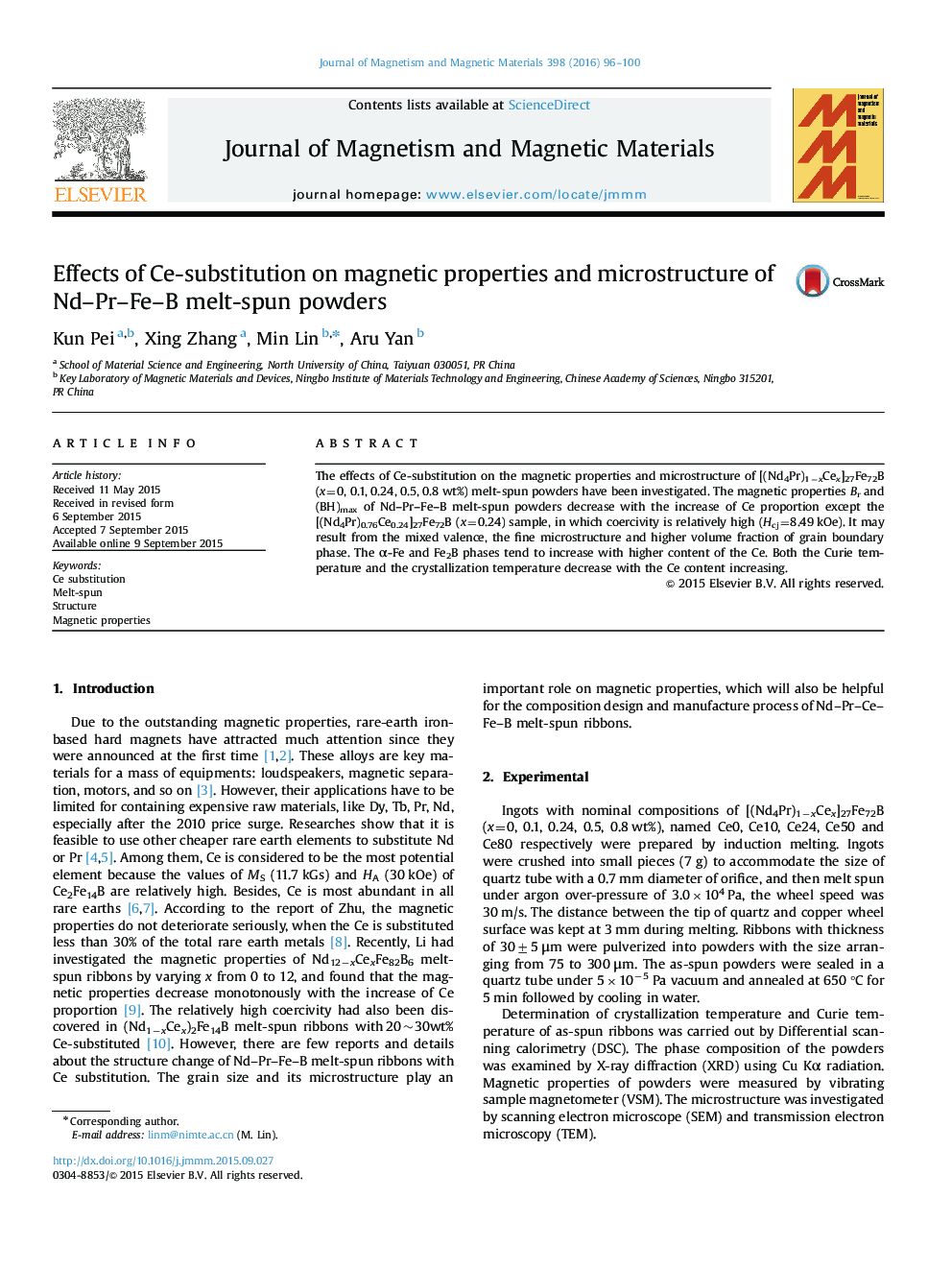| Article ID | Journal | Published Year | Pages | File Type |
|---|---|---|---|---|
| 1798505 | Journal of Magnetism and Magnetic Materials | 2016 | 5 Pages |
•The fine microstructure and obvious boundary phase lead to the relatively high Hcj.•The Tc and crystallization temperature decrease with the increase of Ce proportion.•The volume fraction of α-Fe phase tends to increase when the Ce proportion increases.•The trends of δM with H are similar for all samples with different Ce contents.
The effects of Ce-substitution on the magnetic properties and microstructure of [(Nd4Pr)1−xCex]27Fe72B (x=0, 0.1, 0.24, 0.5, 0.8 wt%) melt-spun powders have been investigated. The magnetic properties Br and (BH)max of Nd–Pr–Fe–B melt-spun powders decrease with the increase of Ce proportion except the [(Nd4Pr)0.76Ce0.24]27Fe72B (x=0.24) sample, in which coercivity is relatively high (Hcj=8.49 kOe). It may result from the mixed valence, the fine microstructure and higher volume fraction of grain boundary phase. The α-Fe and Fe2B phases tend to increase with higher content of the Ce. Both the Curie temperature and the crystallization temperature decrease with the Ce content increasing.
